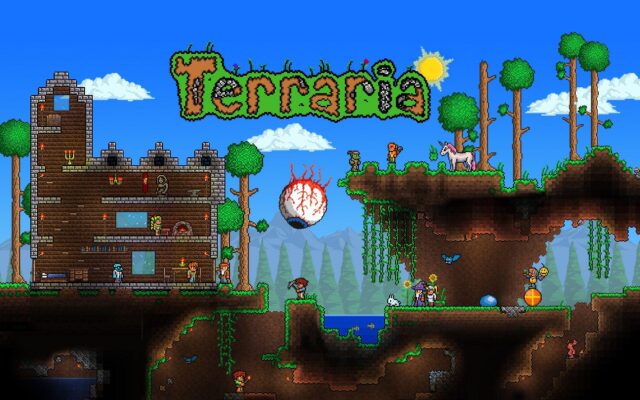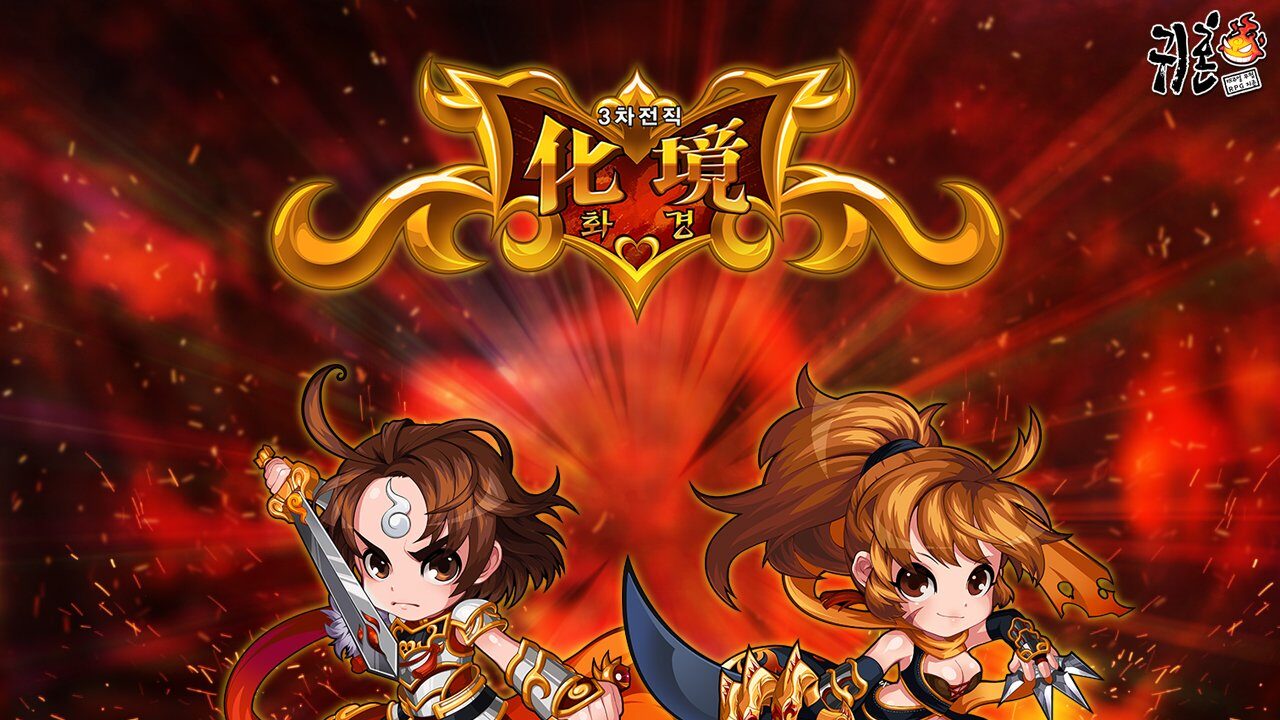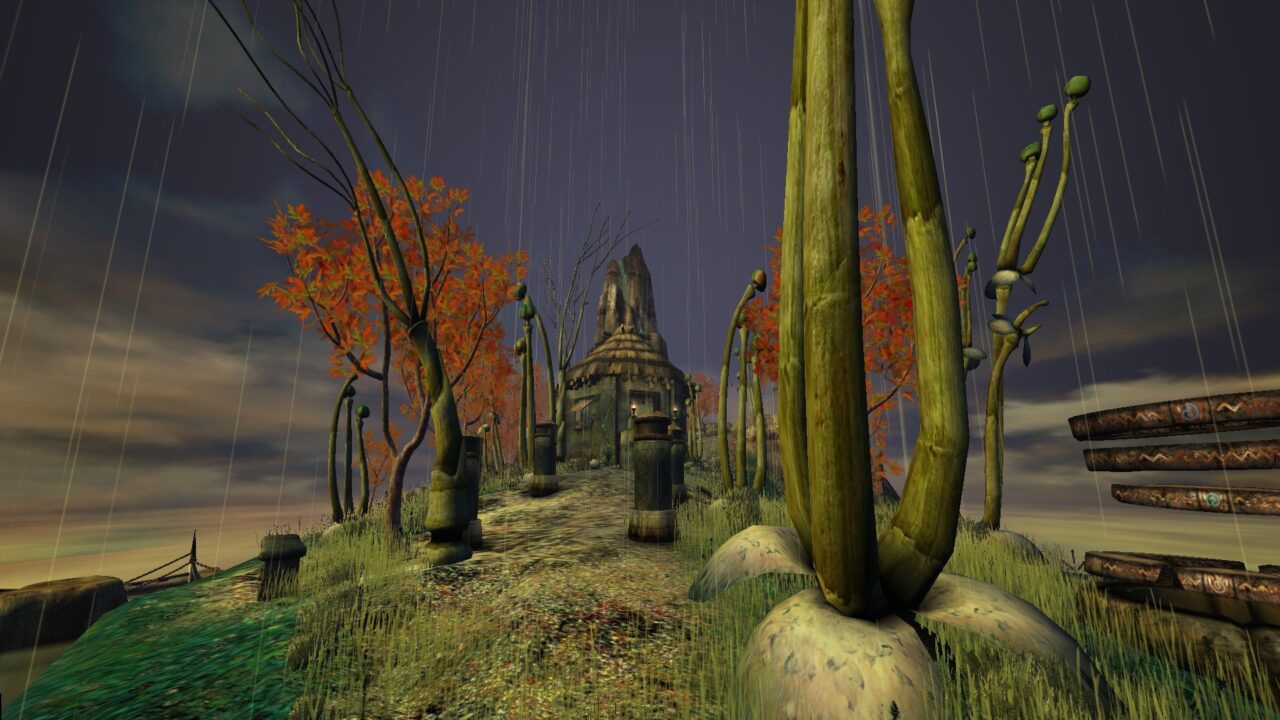Terraria is an action-adventure sandbox game developed by Re-Logic. The game was first released for Microsoft Windows on May 16, 2011, and has since been ported to several other platforms. The game features exploration, crafting, building, painting, and combat with a variety of creatures in a procedurally generated 2D world. Terraria received generally positive reviews, with praise given to its sandbox elements. The game had sold over 35 million copies by the end of 2020.
Gameplay
Terraria is a 2D sandbox game with gameplay that revolves around exploration, building, crafting, combat, survival, and mining, playable in both single-player and multiplayer modes. The game has a 2D sprite tile-based graphical style reminiscent of the 16-bit sprites found on the Super NES. The game is noted for its classic exploration-adventure style of gameplay, similar to games such as the Metroid series and Minecraft.
According to the game lore (Released on the 8th anniversary of Terraria’s release), the World of Terraria was a world of peace that the gods created to grant fairness to each being. Eventually, a creature named Cthulhu with immeasurable power arrived to rain destruction upon the world. Eventually, Dryads arrived to stop Cthulhu. While unable to destroy him, they stopped his ability to rain destruction by ripping out its eyes, brain, and part of its skeleton. Cthulhu then retreated to the far side of the moon. To this day, a lunatic cult in the Dungeon exists to bring back Cthulhu. The cult kidnapped the Mechanic and Old Man to bring back Cthulhu, and have almost succeeded.
The game starts in a procedurally generated world, with players starting out with a few basic tools and a non-player character (NPC) guide to get them started. The game’s world is made up of several layers of tiles that the player can interact with and modify. Many resources, such as metal ores, can be found while exploring caves. The player begins with low health and mana, which can be increased by finding certain items. Some resources may only be found in certain areas of the map, stored in common and rare containers, or dropped by certain enemies. The player uses resources to craft new items and equipment at an appropriate crafting station for that recipe. For example, tables or other items can be crafted at a workbench, bars can be smelted from ore at a furnace, and armor can be crafted at an anvil. Several advanced items in Terraria require multiple crafting operations where the product of one recipe is used as an ingredient for another. Players have the option to customize their characters look when creating a new character, and in-game by visiting the Stylist NPC or the Clothier NPC. Along with that, players can obtain vanity items that can be equipped for looks, and dyes to change the color or equipped armor. Characters have three inventory slots for armor to be equipped, and five inventory slots for various accessories to provide a boost to a player’s statistics, such as wings or water walking boots. Much like most Terraria items, armor and accessories can both be crafted, found around the world, and obtained from defeating bosses.
The player can encounter many different types of enemies in Terraria, the occurrence of which depends on several factors including time, location, and random events. The player can fight against enemies with swords, flails, bows, guns, magic spells, whips, yoyos and summoned minions. The player may also battle bosses that utilize a number of different combat mechanics and can drop rare items. Bosses are summoned by using certain items or when certain criteria are met. The defeat of these bosses is directly tied to in-game progression, save for a few optional bosses. Defeating a certain one advances the game into “hardmode”, which adds many new enemies throughout the world, as well as new NPCs and items. Like bosses, players can battle special enemies and mini bosses during events. Events occur when special criteria is met such as time of day or in-game progress. Events can also be summoned during the right criteria using certain items. Events are not tied to in-game progression except for the Celestial Pillars just before the final boss. Terraria also adjusts gameplay based on the time of year a player is playing, for example, in December the Santa Clause NPC will arrive but he only stays from December 15 – December 31. Other than event battles and boss fights, many exclusive items can only be obtained through fishing. Different items can be caught by fishing in different biomes and during different times of day. Fishing is not a necessary aspect for in-game progression but can be useful to obtain specific items early in a world.
By completing specific goals, such as defeating a boss or obtaining a certain item, players can attract NPCs to occupy structures or rooms they have built, such as a merchant, nurse, or wizard. Some NPCs can be acquired by finding them throughout the world and will then reside in player-created houses after being rescued. Players may then buy or sell items and certain services from NPCs with coins found in the world. The game features many different biomes and areas, which are each home to a unique set of enemies and challenges. Three biomes, specifically the Corruption, Crimson, and the hardmode-exclusive Hallow, will expand by slowly overtaking and converting blocks in adjacent ones. As the player explores the world, the minimap is filled in and can be looked at any time in-game to ensure players can always find their way home. The minimap is also useful when a player needs to travel to certain biomes, it shows where they need to go. Completed Minimap
“Expert” and “Master mode” are difficulty modes that increase the challenge of the game in exchange for some exclusive items. “Journey” mode allows players to duplicate items, adjust the world’s difficulty, and control weather and time at will while playing. Terraria has support for mods, which is facilitated by the third-party tModLoader. It later received official support when it was released as free downloadable content alongside the “Journey’s End” update in 2020 on Steam.
Development and release
Terraria was developed by Re-Logic beginning in January 2011, and is built on the Microsoft XNA framework and written in C#. Re-Logic was composed of Andrew Spinks, who designed and programmed the game; Finn Brice, who, along with Spinks, did the graphic design for the game; and Jeremy Guerrette, who was a production assistant at Re-Logic, but left shortly after the game’s release. The music was composed by Scott Lloyd Shelly. The game was released for Microsoft Windows on May 16, 2011. In December 2011, the game was updated to version 1.1, adding new monsters, bosses, NPCs, and items. The update also included improvements to the game’s world generation technology and lighting system. In February 2012, the developers announced that they would not be continuing active development, but would release a final bug-fix patch. However, development resumed in 2013 with Spinks asking the community for ideas to include in future content updates.
In September 2012, Spinks announced that Engine Software and 505 Games would be porting Terraria to Xbox 360 and PlayStation 3. The game was released for Xbox 360 via Xbox Live Arcade on March 27, 2013. The PlayStation 3 version was released via the PlayStation Network in North America on March 26, 2013 and in Europe and Australia on May 15, 2013. Shortly after the initial console release, 505 Games announced Terraria for PlayStation Vita; it was released in Europe on December 11, 2013, and in North America on December 17, 2013. Spike Chunsoft localized the PlayStation 3 and Vita versions for release in Japan, including exclusive items such as a costume based on Monokuma from their Danganronpa series. In May 2013, 505 Games announced a mobile version of Terraria ported by Dutch studio Codeglue for Android, iOS, and Windows Phone. It was released for iOS on August 29, 2013, and for Android on September 13, 2013. The Windows Phone version was released on September 12, 2014.
In October 2013, Re-Logic released version 1.2 for Terraria on Windows. The update added a host of new mechanics, gameplay changes, and graphics adjustments. After the 1.2 update was released the game returned to receiving continuous updates. The console and mobile versions received the update in 2014. Terraria released on GOG.com on October 2, 2014. A downloadable version of Terraria was released for PlayStation 4 on November 11, 2014, and Xbox One on November 14, 2014, with a retail release on December 2, 2014. In September 2014, Re-Logic announced that Terraria would be coming to macOS and Linux. They were both released on August 12, 2015. The Nintendo 3DS version was first released on the Nintendo eShop on December 10, 2015. A Wii U version was released on the eShop in June 2016.
Version 1.3 was released on June 30, 2015, adding even more items, events, enemies, bosses, and gameplay features. The update was released for consoles on December 12, 2017, and was released for mobile on August 27, 2019. In July 2016, 505 Games announced that Engine Software and Codeglue would no longer be working on the console and mobile versions respectively and that a new studio, Pipeworks, would take over the development of those versions. A version for the Nintendo Switch, ported by 505 Games, was released on June 27, 2019. In December 2018, 505 Games announced that development of the 1.3 update for mobile would be taken over by DR Studios to help Pipeworks focus on the Switch port of the game. In August 2020, Re-Logic announced that development of the Console and Switch would be taken over by DR Studios.
The fourth and final major update for the game, Journey’s End, was released on May 16, 2020, the ninth anniversary of the game’s initial release. As with previous updates, it added new items, enemies, difficulty modes, and gameplay features.
In early February 2021, Andrew Spinks announced the cancellation of the Stadia port of Terraria due to the suspension of the Re-Logic/Spinks’s Google account without a given reason for over three weeks. He also announced that Re-Logic would not be working with Google again in the future stating, “I will not be involved with a corporation that values their customers and partners so little. Doing business with Google is a liability.” He later clarified that existing Android and Google Play versions of the game will not be affected. Later that February, Google reached out to Re-Logic about the account shutdown and provided transparency around the situation and restored their accounts, and subsequently, Re-Logic reaffirmed that they still planned to release the game for Stadia, which it did on March 18, 2021.
A March 2021 update for the Steam version of the game added direct support for resource packs, worlds, and character sharing through the Steam Workshop. tModLoader is still used to help provide and install user-created mods for the game.
On October 21, 2021 it was announced on the official Terraria Twitter account that a new update would add content from the indie video game Don’t Starve Together. It was also announced that Don’t Starve Together would be getting Terraria-themed content. Both updates were released on November 18, 2021.
Cancelled sequels
In October 2013, Spinks announced that he was planning Terraria 2, stating that it would be significantly different from the original game. The state of Terraria 2 is currently unknown. Terraria: Otherworld was another planned game set in the Terraria universe, and was announced in February 2015 to be released later that year. Otherworld tasked the player with trying to purify the world of the Corruption, which was to be achieved mainly by finding and activating “purifying towers” that push back the spread of the Corruption. Otherworld would have included more strategy and role-playing elements, such as a tower defense gameplay element, skill trees, and a plot. In April 2017, Re-Logic announced that the previous partner on the project, Engine Software, would be dropped in favor of a new studio, Pipeworks, due to the game being behind schedule. In April 2018, Re-Logic announced that the game had been cancelled due to them not being satisfied with its development and unwilling to rush the release of a non-quality product.
Reception
Terraria received generally favorable reviews from critics, according to review aggregator Metacritic. A review for Destructoid included praise for Terraria as “full of depth”. Another reviewer praised Terraria‘s integration of some of Minecraft‘s concepts into two dimensions. GameSpot praised Terraria‘s exploration and feeling of accomplishment but criticized its lack of tutorial or explicit directions. IGN praised the game, claiming that Terraria: “expands on the familiar sandbox gameplay with a greater emphasis on combat and adventure.” Terraria received the #1 of 2011 Indie of the Year Player Choice on IndieDB. Terraria has been described as a Minecraft clone by various video gaming media outlets.
Terraria sold 200,000 copies in just over a week after its release, and over 432,000 within a month. By June 2015, over 12 million copies of Terraria were sold across all platforms, with that number increasing to over 35 million by the end of 2020, with 17.2 million on PC, 8.5 million on consoles, and 9.3 million on mobile platforms.




